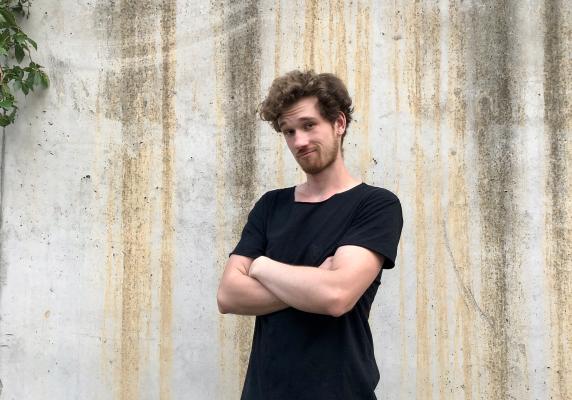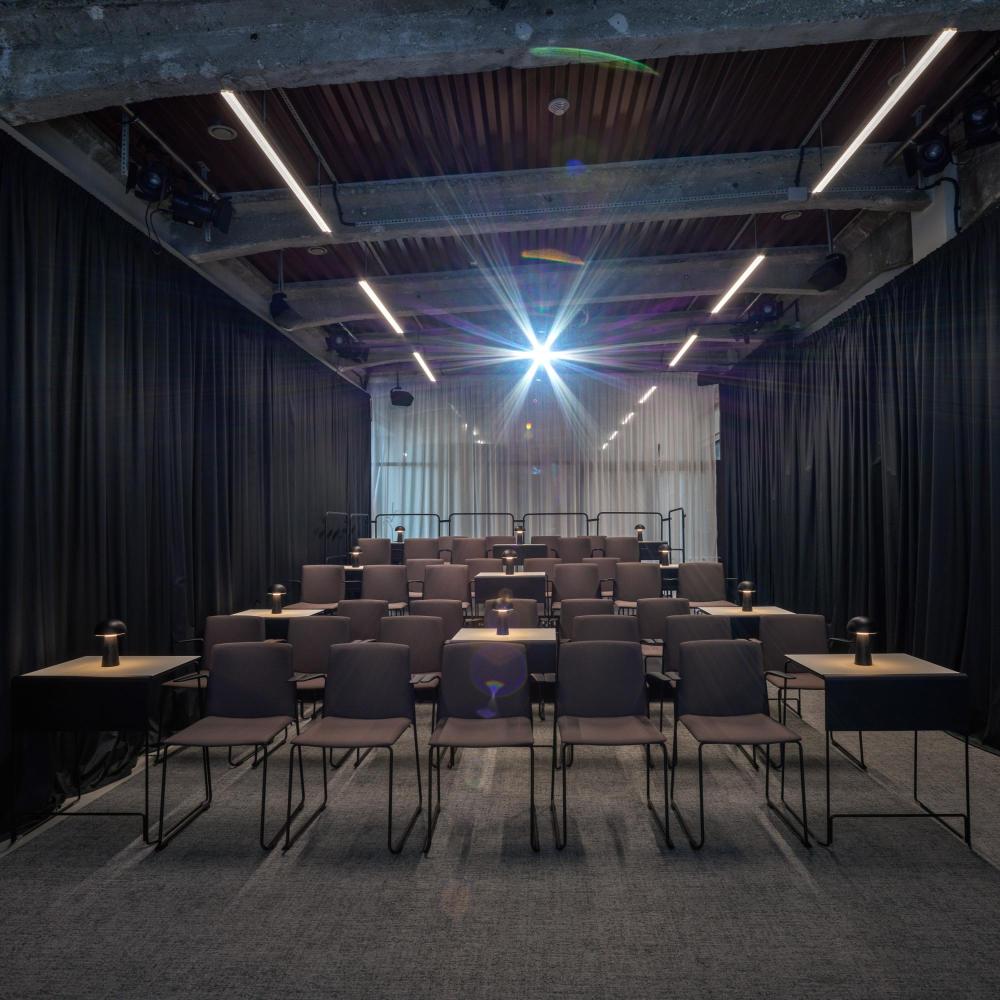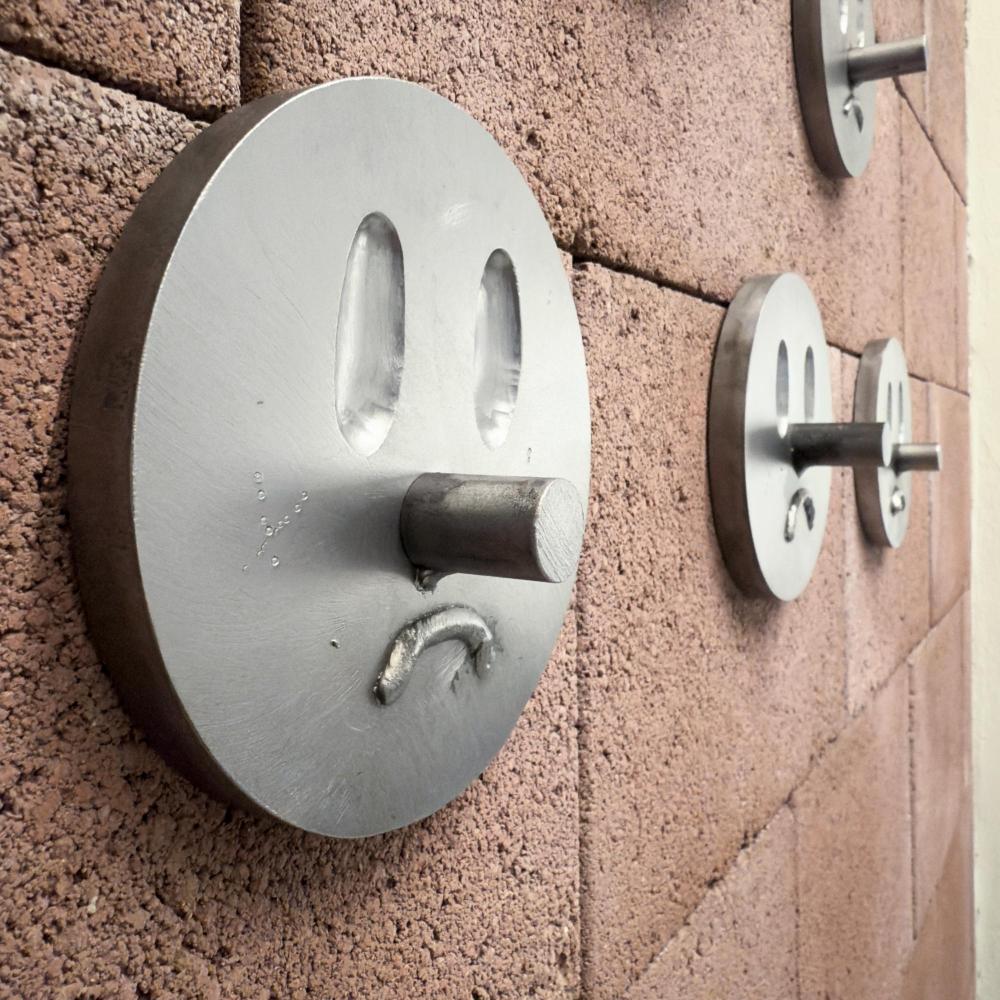
Patrik Adamec was born in Chomutov, North Bohemia, but his childhood and personality were largely shaped by a decade spent with his parents in the American state of Florida. After returning to the Czech Republic, Patrik began to devote himself to fine art. He began studying architecture and industrial design at the Czech Technical University, but soon felt a desire for purely artistic expression. Since 2017 he has been studying at the Academy of Fine Arts. In his sculptural work, he translates his ideas into figurative forms with exaggeration. In 2023, he was the winner of the Critics' Prize for Young Painting. In his paintings he returns to the places of his childhood and contemporary life in the Czech Republic. In August, Patrik Adamec was part of the traditional Telegraph Artists Presentation program. On this occasion we prepared some questions for him about his artistic work.
As a child, you lived with your parents in Florida. Were you able to take in the art scene at such a young age? If so, what did you see around you?
Art scene in general, I was interested in art, but rather superficially. I knew I was interested enough in art to want to become an artist. I've been to various exhibitions thanks to my parents, but in retrospect it didn't really affect my current development as an artist.
Did you have trouble getting used to the country after you came back from America?
It was a very interesting change. I was used to change from a young age, we were always moving around and this felt normal, it was just a much bigger jump. The change in mentality, the environment and the perception of values and detail in society was very interesting and gave me a lot to work with. In retrospect, I think I somehow managed and sailed through it, but it wasn't easy. I feel like I'm not Czech or American.
You studied at the Czech Technical University, but interrupted your studies and went on to study at the Academy of Fine Arts, where you worked as an assistant to the artist Michal Cimala during your studies. How was that experience for you?
I was interested in art from a very young age, but from the age of 14 I knew I wanted to be a sculptor. It was still in me, but my parents didn't think much of it, so they were figuring out what would be a sensible thing to study. What is and isn't reasonable to study is terribly complicated, but in the end I definitely made the right choice. Thanks to CTU I gained a portfolio, insight and the courage to tell myself that I would go for it at the cost of studying for a longer period of time. It made sense. During my studies, the school went through various changes. When I graduated, a number of situations led to a change in the leadership of our studio and I am very appreciative and grateful that Michal chose me as his assistant even for that short period of time. I had already been involved in the studio a bit beyond the call of duty, so it was a natural progression. The collaboration with colleagues, friends and students was interesting and quite intense. It gave me insight into many of the pitfalls of our school system, how one might think about teaching art (I don't think art can be taught), and what the experience of pedagogy itself might look like.
You won the Critics' Prize for Young Painting competition with paintings created using the email technique. The titles of your paintings, such as Where My Home Is, also refer to the direction of our civilization. Where do you think we are heading this way with the passage of time since that series?
I have a huge respect for painting and painters and would never have thought of entering a painting competition. Painters and painting are a great inspiration for my work. Among the many things that both fascinate and excite me is working with the material of paint itself, painting with the material. I was looking for a sculptural way to grasp painting and to represent tension. Foam is always in my studio, and because it functions as the ultimate volume and is in close contact with physicality, I began to upholster the foam on wooden boards and stretch them with painter's canvas, repeatedly brushing and sanding. Eventually I used paints designed for industrial purposes. The paints are technically durable, synthetic, glossy, slick and uncompromising. The paintings layer and stack on top of each other, pushing and repelling each other, creating tension. I enjoy the naivety and simplicity of the transmission of information, where the landscape becomes the landscape. The paintings/reliefs have quite a surrealistic undercurrent that makes me question who I am or where I am. There is also a social idealism and hyperbole to the landscape in the paintings. I think we don't know where we're going and we struggle terribly with the system we've created and we fit the landscape and nature to it and try to understand it somehow, but I think that's quite conflicting. I love the dreamy romantic idealism of a lonely cottage in the countryside that you want to call home.
The "sculptural reliefs" with which you won the aforementioned prize work with space. What does space mean to you and how important is playfulness in your work?
Space is exciting. So is evaluating distances, compositions, supporting impressions, guiding the viewer and feelings. Space is complex. Space is sculpture and sculpture is space. These things are complementary and cannot be without each other. I enjoy treating space in a more installation and unconventional way. Glasses are a nightmare and quite problematic. I'm trying to figure out how to use a given moment or space as that plinth. That leads to playfulness and exaggeration. The playfulness mainly lightens and allows you to get into the issues of the work. Personal playfulness is a bit of an obsession. I try to push the boundaries further. To surprise myself.
What led you to work for the Prague Kunsthalle? Was there a project you helped with that you found rewarding?
During my studies I realised that artists have an interesting role to play, they are sensitive and skilled in their craft, which are important qualities when it comes to producing or installing artworks. I started making a living by installing for various exhibitions or festivals and making things on commission for artists. All this led me to the situation where I started installing exhibitions for Kunsthalle thanks to Matej Al-Ali. We have a great team that can handle anything that comes its way. So I come across new situations that are enriching for my work, insights and practices. And most importantly, working with a rich variety of artists is quite an interesting experience.
In the winter you had an exhibition at Portheimka in Prague, can you tell us about the concept of the exhibition and your exhibited works?
The exhibition earlier this year was organised by Petr Hajek of The Chemistry Gallery to celebrate 150 years since the last meeting of the Schlaraffia Society at the Portheimka, a celebration of art, friendship and humour. It was an exhibition of contemporary painters and sculptors - I exhibited paintings. At the same time, I was exhibiting at the Critics Gallery during that. I'm always thrilled to find myself in confrontation and dialogue with other artists in group exhibitions.
We're going to stay in winter for a while. You had a show with Lara Limbourg at the Telegraph loft - how did you meet? There were sculptures of hands in the loft that were made up of rubber gloves. How did you achieve the plasticity of the gloves? Is it possible that you were referring to the Slovak sculptor Jozef Jankovic? Your sculptures were placed in Laura's vases, was this your intention or did this collaboration happen only during the installation process?
We have studios on the same floor, almost next to each other. It was mainly thanks to Laura that I got the studio in Smichov, where I still am today. We became friends and started working on Laura's thesis at that time. As part of it, she wanted to reach into the space with vases. I thought it would be sensible to try a smaller scale, but she is magically determined and determined, so she wasn't entirely amused by the idea. She skipped the safe considerations and went for larger-than-life scale. It seemed like a shame to skip the smaller scale. It could have been an interesting dimension to develop her work and the possibility of collaboration. At the time, I was just lazing around thinking about flowers, how we don't really understand them and how we constantly want to set them up and fit them into something. We are constantly trying to romanticize nature. So I had the idea of connecting the container to the contents, which are the gloves. Personally, I enjoy them - they are essential for creating and protective gear. They have blunt shapes that are made with exaggeration and universal intent. They are a grotesque, anonymous object and their gestures are so charged with emotion and meaning. Mostly, the gloves remind me of plant leaves - surreal leaves - simple, vulgar, curious leaves. Leaves that try to understand us and to bring themselves closer to us, so that understanding can take place. They take on a human form thanks to an industrial product. Work is one of the main topics I'm involved in and it was the work gloves, which are always in my sight, that came up. I know Jozef Jankovic, but it wasn't the impulse to use these items - I appreciate his work and find them powerful things.
In your current exhibition at Trafo Gallery, you are showing a bed object on which a limbless torso is laid. What are you referring to in this piece?
Trafo has a cool group show dealing with material in sculpture. I have stuff there from my thesis series that is in cast iron and in silicone. My thesis is called Lability and in it I explore my own instability - sculptural and psychological. The torso is just an introspective piece that addresses my inner psychological side. It's sometimes challenging to get out of bed every day. We're there with ourselves in a shell. Reflections and thoughts rush in and we lose control of time. The fact that the limbs aren't there is compounded by the fact that I can't move from my seat and have to confront myself. I cannot escape the inevitable, I am frozen in time. The torso is cast in cast iron, which has immense material appeal, but is also a heavy and serious material. The weight of the material sinks into the soft foam of the bed. I dive into the inner landscape.
What are you currently working on?
I'm reflecting on the fluid thoughts I came across for my thesis. At the same time, I am preparing new paintings and trying to find a balance in what to pursue and what takes precedence. I have an important solo show coming up in October at the Hybernska gallery, which I am currently preparing for. I have new insights into what lability means and how to deal with it. I am creating a kind of sculptural diary, an open space sketchbook. It's revolving a lot around the figure, the material and how to treat the space for the benefit of the meaning and the work itself.
By Kateřina Kocourková, Inka Ličková / Telegraph Gallery







